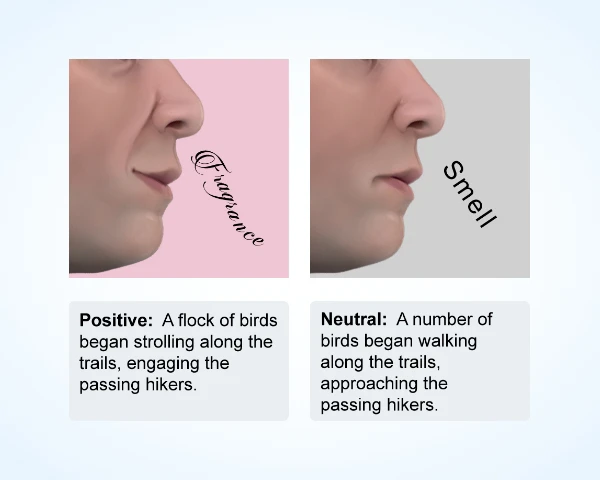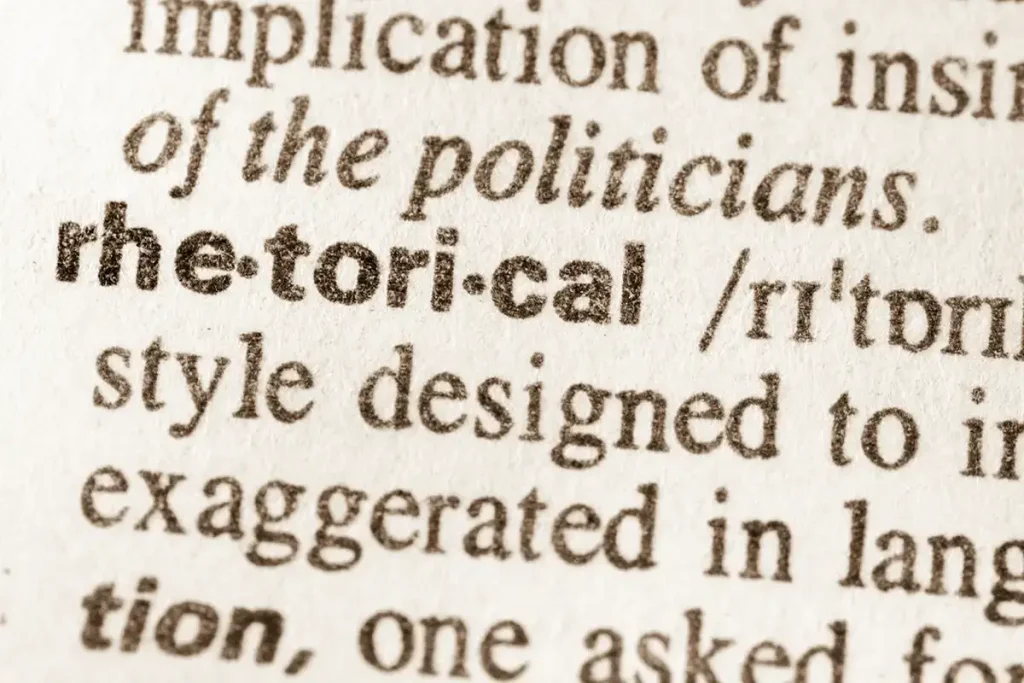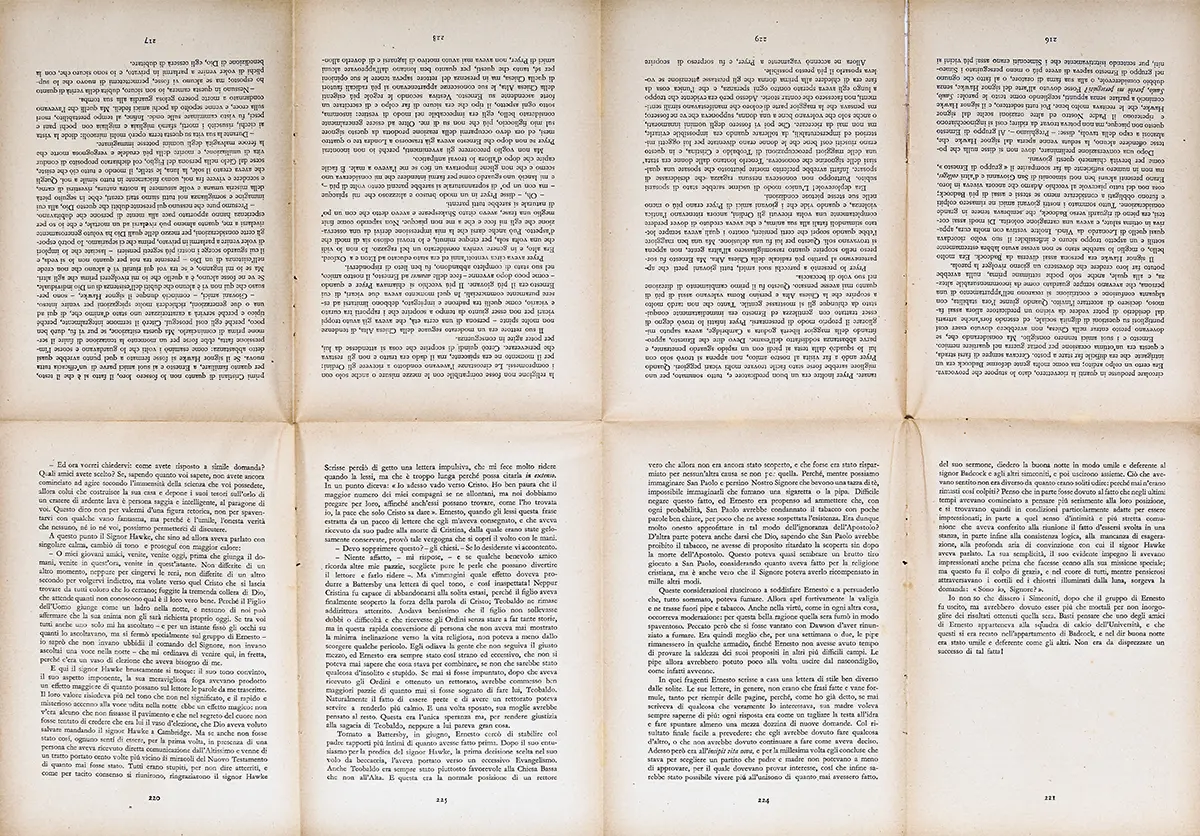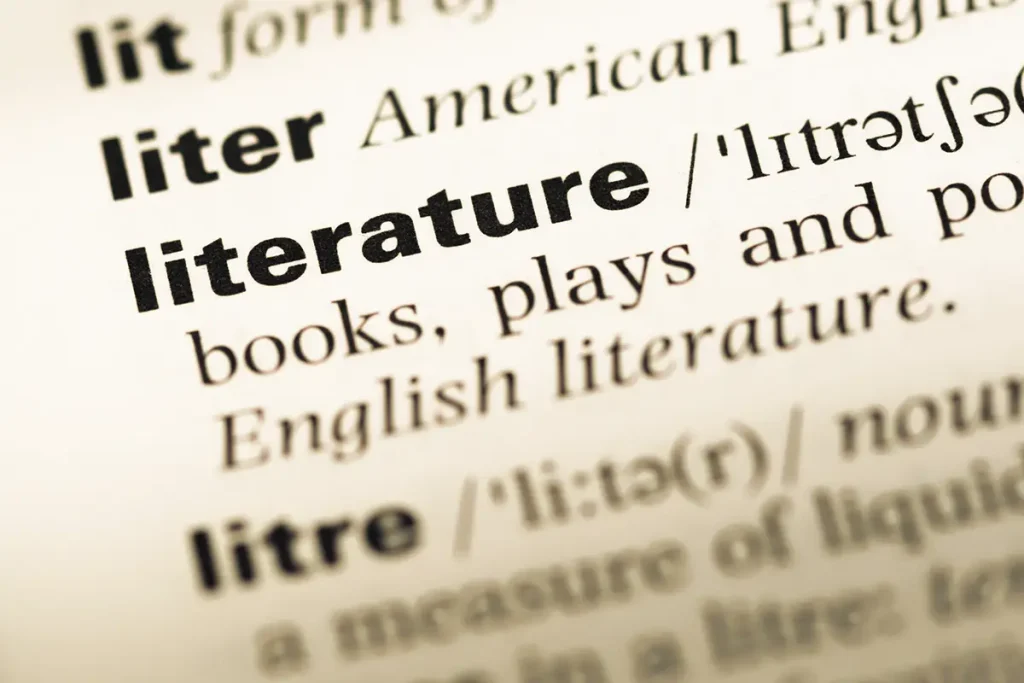AP® English: Writing Prompts and Essential Literary Resources
Human language is completely different from all other means of animal communication. The complexity of human communication exceeds that of some primates' use of sign language. Neanderthals, who are the closest genetic ancestors of our species, also never evolved complex communication like our own.1 But even more than our ability to speak in complete sentences—and with an entire system of grammatical rules (regardless of which language is spoken)—nothing highlights the difference between humans and animals quite like the human ability to communicate with writing.
AP® English classes are centered around written communication. In both AP Literature and AP Language, students must be able to analyze a variety of written texts and also be able to construct their own. Students in AP Lang focus on rhetorical analysis, which requires students to analyze the rhetorical strategies employed by an author in a given text. AP Lit students, on the other hand, focus on literary analysis, which requires students to examine and interpret a literary work. Since both types of analyses require strong writing responses, it’s important to make sure students build strong communication and critical thinking skills through consistent writing and critical thinking practice.
AP English Language and Composition Writing Prompts
To develop their skills in AP Lang, students should regularly practice writing with AP Language writing prompts that encompass a wide range of rhetorical strategies and topics. These prompts can be incorporated into various classroom activities every day—five-minute bell-ringers, quick exit tickets, or even full writing assignments. The more AP Lang students practice writing with rhetorical prompts, the more they will refine their ability to analyze and respond effectively to complex texts. Additionally, practicing with AP Language writing prompts cultivates critical thinking, enhances persuasive writing techniques, and prepares students for the rigorous exam format.
The following section includes several AP Language writing prompts you can use in your AP Lang class. Each prompt correlates with specific course units and a big idea.
RHS (Rhetorical Situation): Units 1, 2, 4, 7, & 8
Individuals write within a particular situation and make strategic writing choices based on that situation.
| Skill Category 1 | Skill Category 2 | |
|---|---|---|
| Explain how writers’ choices reflect the components of the rhetorical situation. | Make strategic choices in a text to address a rhetorical situation. | |
| Prompt 1: “An organization is planning a protest against a proposed law that they believe will infringe on citizens’ rights. Write a persuasive response arguing for or against the effectiveness of protests as a means of bringing about social and political change. Use specific examples to support your position.” | ||
| Prompt 2: “A company is launching a new product and wants to create a marketing campaign that appeals to a wide audience. Write a persuasive response analyzing the importance of understanding the target audience’s values, beliefs, and needs when crafting persuasive messages. Use real-world examples to illustrate your points.” | ||
| Prompt 3: “A high school is considering implementing a dress code policy to promote a positive learning environment. Write a persuasive response arguing for or against the implementation of a dress code policy in schools. Support your argument with evidence from research, personal experiences, or examples from other schools.” | ||
| Prompt 4: “A community is debating whether to ban single-use plastic bags in grocery stores to reduce environmental waste. Write a persuasive response discussing the ethical implications of using single-use plastic bags and arguing for or against the ban. Use logical reasoning and evidence to support your stance.” | ||
CLE (Claims and Evidence): Units 1, 2, 3, 4, 6, 7, & 9
Writers make claims about subjects, rely on evidence that supports the reasoning that justifies the claim, and often acknowledge or respond to other, possibly opposing, arguments.
| Skill Category 3 | Skill Category 4 | |
|---|---|---|
| Identify and describe the claims and evidence of an argument. | Analyze and select evidence to develop and refine a claim. | |
| Prompt 1: “Many people argue that social media has a detrimental impact on interpersonal communication skills because it promotes superficial interactions. Do you agree or disagree? Use specific claims and evidence to support your response.” | ||
| Prompt 2: “Some individuals claim that standardized tests are not an accurate measure of a student’s abilities and should be abolished. What is your stance on this issue? Provide reasoned arguments and supporting evidence to defend your position.” | ||
| Prompt 3: “Writers often employ rhetorical devices to enhance their persuasive arguments. Choose a piece of literature or a speech that makes effective use of rhetorical devices and analyze how these devices contribute to the writer’s claims and evidence.” | ||
| Prompt 4: “The use of technology in classrooms has become a controversial topic. Do you believe that integrating technology into the learning environment positively or negatively impacts student learning? Make a claim supported by evidence and consider opposing arguments.” | ||
REO (Reasoning and Organization): Units 3, 4, & 5
Writers guide understanding of a text’s lines of reasoning and claims through that text’s organization and integration of evidence.
| Skill Category 5 | Skill Category 6 | |
|---|---|---|
| Describe the reasoning, organization, and development of an argument. | Use organization and commentary to illuminate the line of reasoning in an argument. | |
| Prompt 1: “Some people argue that social media has had a detrimental effect on communication skills, as it often encourages shallow and brief interactions. Do you agree or disagree with this claim? Use specific reasons and examples to support your response.” | ||
| Prompt 2: “Advertising plays a significant role in shaping consumer behavior and choices. Do you believe that advertisements should be more regulated to ensure they provide accurate information and do not manipulate consumers? Explain your position and support it with reasoning and evidence.” | ||
| Prompt 3: “The use of technology, such as smartphones and tablets, has become increasingly prevalent in educational settings. In your opinion, does technology enhance or hinder students’ learning experiences? Use specific examples and reasoning to support your viewpoint.” | ||
| Prompt 4: “Many people argue that standardized tests, such as the SAT or ACT, do not accurately measure a student’s intelligence or potential. Do you think standardized tests are an effective way to assess students’ abilities? Why or why not? Provide specific reasons and examples to support your response.” | ||
STL (Style): Units 5, 6, 7, & 8
The rhetorical situation informs the strategic stylistic choices that writers make.
| Skill Category 7 | Skill Category 8 | |
|---|---|---|
| Explain how writers’ stylistic choices contribute to the purpose of an argument. | Select words and use elements of composition to advance an argument. | |
| Prompt 1: “Analyze the following sentence: “The sun shone brightly, casting a golden glow over the emerald fields.” How does the author’s choice of adjectives contribute to the overall style of the sentence? What effect does it create?” | ||
| Prompt 2: “Consider the rhetorical situation of a political speech. How might a speaker strategically use rhetorical devices such as repetition or parallelism to enhance their message and engage the audience? Provide specific examples to support your analysis.” | ||
| Prompt 3: “Choose a passage from a novel, essay, or speech and identify the author’s tone. How does the author’s tone shape the overall style and impact of the piece? Discuss the specific language choices that contribute to the tone.” | ||
| Prompt 4: “Imagine you are writing a persuasive essay advocating for the importance of arts education in schools. How would you strategically employ stylistic devices, such as vivid imagery or emotional appeals, to effectively convey your argument? Provide specific examples of how these stylistic choices would strengthen your persuasive message.” | ||
*AP® English Language and Composition Course and Exam Description2
AP Lang Rhetorical Analysis Resources
In AP English Language and Composition, rhetorical analysis reigns supreme. But before students can practice applying their knowledge of constructing responses to rhetorical analysis prompts, they must first learn how to do so. Therefore, when teaching its concepts and processes to students, having quality rhetorical analysis resources is especially helpful to AP Language teachers.
The following is a list of our favorite free rhetorical analysis resources for the AP Lang classroom:

AP English Literature and Composition Writing Prompts
AP English Literature and Composition students should practice writing prompts that challenge their ability to analyze and interpret literary works across different genres and time periods. These AP Literature writing prompts can be seamlessly integrated into brief 5-minute bell-ringers or concise exit tickets, as well as longer assignments that delve deeper into literary analysis. By engaging with AP Literature writing prompts regularly, students sharpen their critical thinking skills, develop a nuanced understanding of literary techniques, and hone their ability to craft insightful and cohesive responses. The following table includes
The following section includes several AP Literature writing prompts you can use in your AP Lit class. Each prompt correlates with specific course units and a big idea.
CHR (Character): Units 1, 2, 3, 4, 6, 7, & 9
Characters in literature allow readers to study and explore a range of values, beliefs, assumptions, biases, and cultural norms represented by those characters.
| Skill Category 1 | |
|---|---|
| Explain the function of character. | |
| Prompt 1: “Consider a character from a novel or play that you have read in this course. How does this character’s values and beliefs reflect the societal norms and cultural context of the time in which the work was written? Support your response with specific examples from the text.” | |
| Prompt 2: “Think about a character from a literary work who undergoes a significant transformation throughout the course of the story. What values or beliefs does this character initially hold, and how do they change over time? Discuss the factors that contribute to this character’s transformation, using specific evidence from the text.” | |
| Prompt 3: “Choose a character from a literary work who challenges or subverts traditional gender roles or societal expectations. Analyze how this character’s actions and beliefs provide a critique of the prevailing cultural norms at the time the work was written. Use specific examples from the text to support your analysis.” | |
| Prompt 4: “Select a character from a literary work who embodies a particular ideology or belief system. Discuss how this character’s values and assumptions shape their actions and interactions with other characters. Consider the implications of this character’s ideology in relation to the broader themes and messages of the work.” |
SET (Setting): Units 1, 3, 4, & 7
Setting and the details associated with it not only depict a time and place, but also convey values associated with that setting.
| Skill Category 2 | |
|---|---|
| Explain the function of setting. | |
| Prompt 1: “We have explored how setting can convey values associated with a particular time and place. Choose a novel or play from the unit and analyze how the setting contributes to the overall themes and messages of the work.” | |
| Prompt 2: “Select a poem or short story from this unit and discuss how the author’s choice of setting enhances the meaning and impact of the work.” | |
| Prompt 3: “We’ve examined the role of setting in shaping characters and their experiences. Choose a novel or play from the unit and analyze how the setting influences the development of a specific character.” | |
| Prompt 4: “Select a poem, short story, or novel from this unit and discuss how the details associated with the setting create a particular atmosphere or mood in the text.” |
STR (Structure): Units 1-9
The arrangement of the parts and sections of a text, the relationship of the parts to each other, and the sequence in which the text reveals information are all structural choices made by a writer that contribute to the reader’s interpretation of a text.
| Skill Category 3 | |
|---|---|
| Explain the function of plot and structure. | |
| Prompt 1: “Analyze the structural choices made by the author in a novel or play you have recently read. How does the arrangement of the parts and sections of the text contribute to your interpretation of the work? Provide specific examples to support your analysis.” | |
| Prompt 2: “Choose a poem and examine its structure. How does the sequence and organization of the lines and stanzas enhance the overall meaning and impact of the poem? Discuss the relationship between the parts and how it contributes to your understanding of the poem.” | |
| Prompt 3: “Select a short story and discuss how the author’s structural choices, such as the order of events, flashbacks, or narrative perspective, shape your interpretation of the story. Explain how these structural elements affect the pacing, tension, or overall message of the narrative.” | |
| Prompt 4: “Consider a non-fiction text you have read recently, such as an essay or article. Explore the structural choices made by the writer, such as the use of headings, subheadings, or the organization of arguments. Discuss how these structural elements impact your understanding of the text and its effectiveness in conveying the writer’s ideas.” |
NAR (Narration): Units 1, 4, 6, 7, & 9
A narrator’s or speaker’s perspective controls the details and emphases that affect how readers experience and interpret a text.
| Skill Category 4 | |
|---|---|
| Explain the function of the narrator or speaker. | |
| Prompt 1: “Think about a book or short story you’ve read where the narrator’s perspective influenced your interpretation of the text. Describe a specific instance where the narrator’s unreliability or bias affected your understanding of the story. How did it shape your reading experience?” | |
| Prompt 2: “Choose a work of literature where multiple narrators or points of view were employed. Discuss how the use of different perspectives enhanced your understanding of the characters, plot, or themes. What unique insights did each narrator offer?” | |
| Prompt 3: “Reflect on a book or poem you’ve read where the author’s choice of narrator significantly influenced your emotional response. Describe the qualities or characteristics of the narrator that contributed to this effect. How did the narrator’s voice shape your connection to the story?” | |
| Prompt 4: “Think about a text you’ve read where the narrator intentionally withholds or reveals information, creating suspense or surprise. Describe a specific instance where the narrator’s control over details influenced your engagement with the story. How did the author’s use of narrative manipulation affect your reading experience?” |
FIG (Figurative Language): Units 2, 5, 6, 7, & 8
Comparisons, representations, and associations shift meaning from the literal to the figurative and invite readers to interpret a text.
| Skill Category 5 | Skill Category 6 | |
|---|---|---|
| Explain the function of word choice, imagery, and symbols. | Explain the function of comparison. | |
| Prompt 1: “Choose a metaphor from a novel or play we’ve studied and explain how it enhances the reader’s understanding of a character, theme, or plot. Be sure to include specific examples from the text in your response.” | ||
| Prompt 2: “Identify one instance of personification in a poem of your choice and discuss its impact on the reader’s interpretation of the poem. How does the poet’s use of personification contribute to the overall meaning or theme of the poem? Provide specific details from the text to support your analysis.” | ||
| Prompt 3: “Choose a passage from a short story or essay we’ve discussed and analyze the author’s use of symbolism. How does the symbolic representation deepen the reader’s understanding of the text? Cite specific examples from the passage to support your analysis.” | ||
| Prompt 4: “Identify a piece of figurative language from a literary work you’ve recently read. Explain how the comparison, representation, or association used in the figurative language enhances the meaning of the text.” | ||
LAN (Literary Argumentation): Units 1-9
Readers establish and communicate their interpretations of literature through arguments supported by textual evidence.
| Skill Category 7 | |
|---|---|
| Develop textually substantiated arguments about interpretations of part or all of a text. | |
| Prompt 1: “Analyze the following statement: “Literature should always provide a clear moral lesson for readers.” Do you agree or disagree? Use specific examples from literary texts to support your argument.” | |
| Prompt 2: “Some critics argue that the author’s intent is irrelevant when interpreting a work of literature, as readers create their own meaning. Discuss your stance on this issue and support it with examples from literary texts.” | |
| Prompt 3: “Consider the role of setting in literature. How does the setting contribute to the overall meaning and impact of a work? Use specific examples from literary texts to support your analysis.” | |
| Prompt 4: “Analyze the use of symbolism in literature. Discuss how symbolism enhances the themes or ideas presented in a work of your choice. Provide specific examples to illustrate your points.” |
*AP® English Literature and Composition Course and Exam Description3
AP Lit Literary Analysis Resources
Literary analysis is perhaps the most important skill in AP English Literature and Composition. However, before students can put their understanding of this skill into practice with prompt responses, they must first learn how to do so. This is why, when teaching literary analysis concepts and processes to students, having high-quality and relevant resources is especially helpful to AP Literature teachers.
Here is a list of our top free literary analysis tools for AP Literature classes:
- The Garden of English: Literary Analysis Templates for Poetry, Prose, and Literary Argument
- Mrs. Wilensky: Welcome to AP Literature
- Study.com: Examples of English Literary Analysis
- Lit & More: Teaching Line of Reasoning to AP English Lit
- Reading and Writing Haven: 10 of the Best Literary Analysis Activities to Elevate Thinking
Key Takeaways
In both AP Literature and AP Language courses, students must learn to analyze diverse written texts and construct compelling written compositions. AP Language emphasizes rhetorical analysis skills, whereas AP Lit students must immerse themselves in the art of literary analysis. Given that both types of analysis require adept written responses, AP English teachers must foster the development of strong writing and critical thinking abilities among their students through consistent practice.
Learn more about how UWorld can support AP English teachers who want to help their students develop their critical analysis skills with our Learning Tools for AP Courses.

References
- Pagel, M. (2017, July 24). Q&A: What is human language, when did it evolve and why should we care? - BMC biology. BioMed Central. https://bmcbiol.biomedcentral.com/articles/10.1186/s12915-017-0405-3#:~:text=Human%20language%20is%20unique%20among,is%20nothing%20like%20human%20language.
- The College Board. (2020). AP English Language and Composition: Course and Exam Description. AP Central. https://apcentral.collegeboard.org/media/pdf/ap-english-language-and-composition-course-and-exam-description.pdf
- The College Board. (2020b). AP English Literature and Composition: Course and Exam Description. AP Central. https://apcentral.collegeboard.org/courses/ap-english-literature-and-composition
- Recco, W., & Schultz, C. (2003). 501 writing prompts - mrsmitchellsaplanguage.weebly.com. EBSCO Learning Express. http://mrsmitchellsaplanguage.weebly.com/uploads/5/9/1/2/59122629/501writingprompts.pdf



